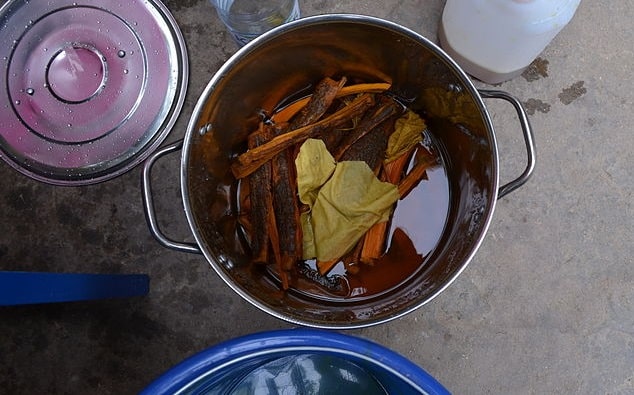Decoction is one of the simplest forms of herbal extraction. It’s pretty much as simple as making tea; in fact, it’s often confused with it (infusion is the technical term).
However, as similar as the two processes are, they have a fundamental difference—decoction simmers herbs in boiling water whereas infusion relies merely on steeping them in hot or cold water. [1] This difference isn’t a matter of preference, but rather depends on the source material.
Decoction is used on roots, seeds, barks, and berries because they are sturdier, meaning their cell walls are harder to break down and give in to extraction, which is where simmering comes in.
Infusion, on the other hand, is used on the softer parts of the plants like leaves and flowers (e.g., chamomile and peppermint). The chemicals of interest within this gentler source material are respectively more fragile, which means that not only is steeping enough to get the job done, but anything more aggressive like simmering would do more harm than good and cause coveted molecules to break down, dissipate, and/or degrade.
There are exceptions to this; valerian root and fennel seed, for example, have volatile components which are better extracted via infusion rather than decoction. Boiling heat can also de-activate compounds in marshmallow root and slippery elm. On the other hand, dandelion and licorice roots warrant decoction.
Decoction Steps
The measurements depend on preference for how saturated the extraction should be. Green [1] suggests 1 ounce of herbs per 16 ounces of water. It’s preferable to grind or break up herbs before decocting them. Soaking the ground herbs in water for several hours (or longer) prior to heating is also advantageous.
Once you have the ingredients ready, put them in a pan. The water should be cold, as decocting directly with boiling water can cause the herbal constituents to stick together and resist extraction. [1]
Cover the pan tightly to avoid evaporation and slowly bring to a boil. Shift to low heat and let simmer for about 15-30 minutes. [1,2] Boil out about half the water. Cool, strain, and use, or dilute with additional water. [1,2]
If you want to mix things up and go for an infusion-decoction combo, first perform the decoction of the sturdier material, then remove the pan from the heat, add the softer parts of the herbs in the mix, and leave it all to sit (covered) for another 10 to 20 minutes. [1] Then simply enjoy—decoctions are best used immediately.
Image: ker thiossane, CC BY-SA 3.0
References:
- Green J . The Herbal Medicine-Maker’s Handbook. Berkeley, CA: Crossing Press; 2000:104-114. Google Books
- Nagalingam A. Drug delivery aspects of herbal medicines. In: Japanese Kampo Medicines for the Treatment of Common Diseases: Focus on Inflammation. Academic Press; 2017:143–164.doi:10.1016/b978-0-12-809398-6.00015-9. [Times Cited: 5 (Semantic Scholar)]











